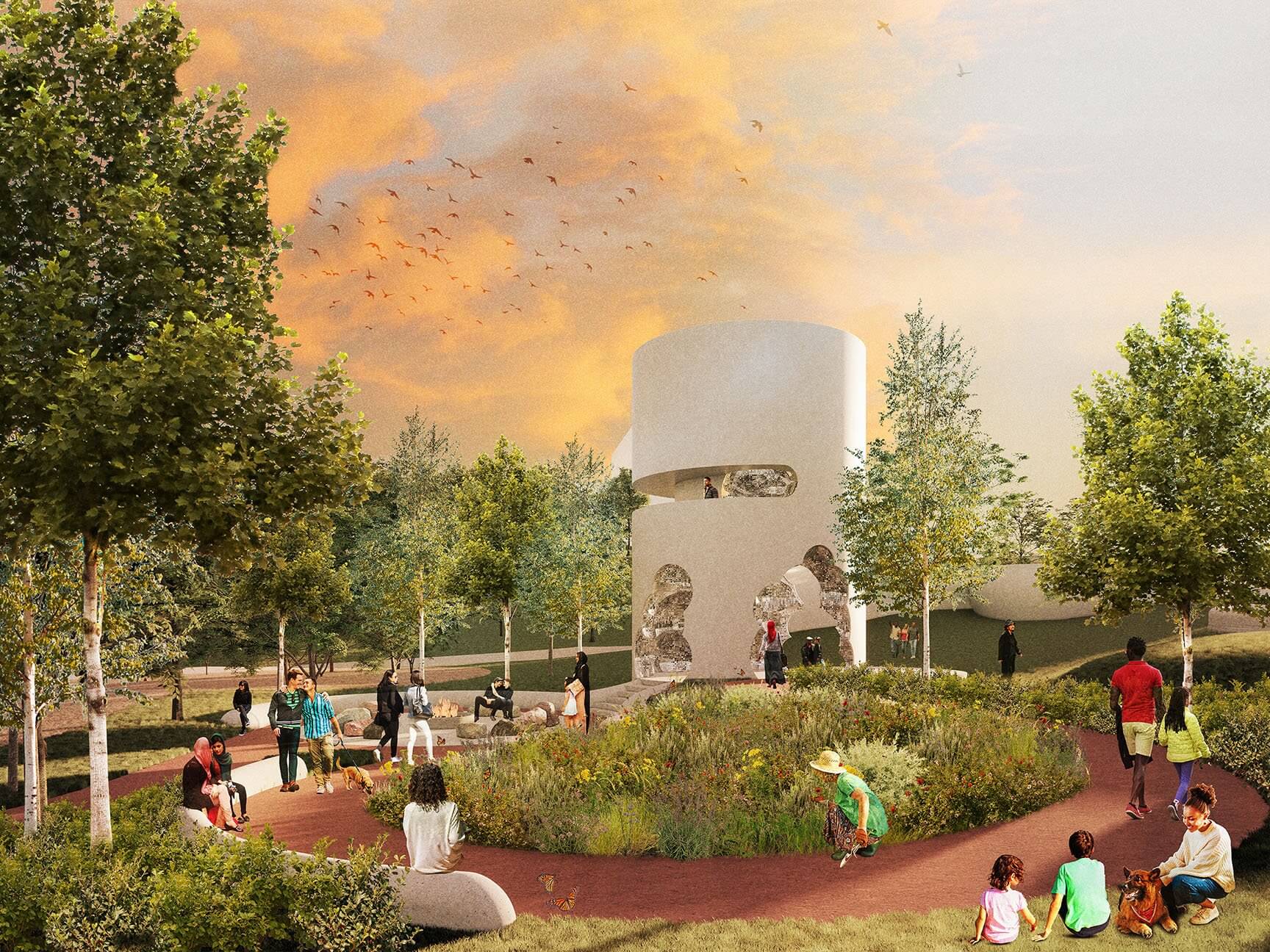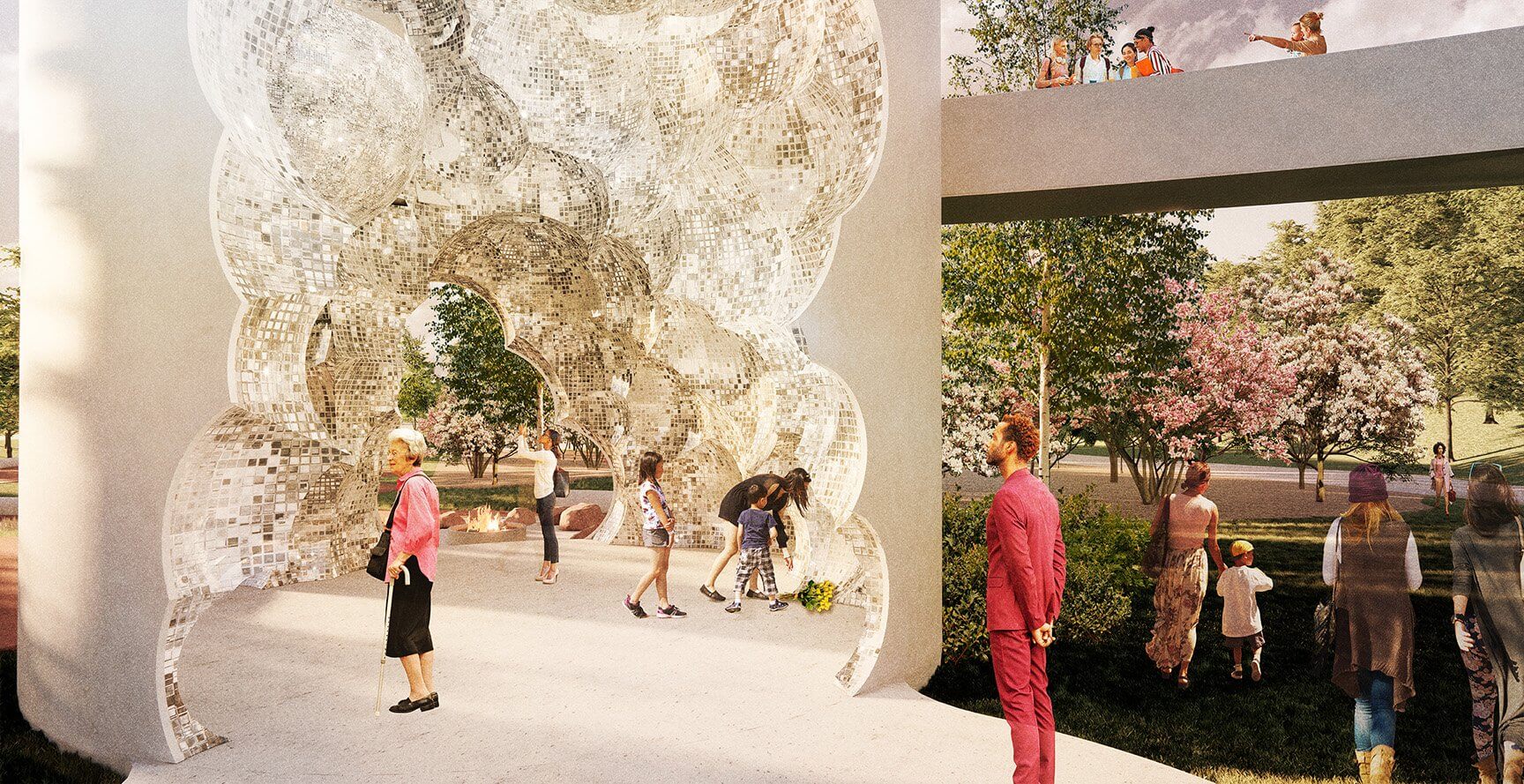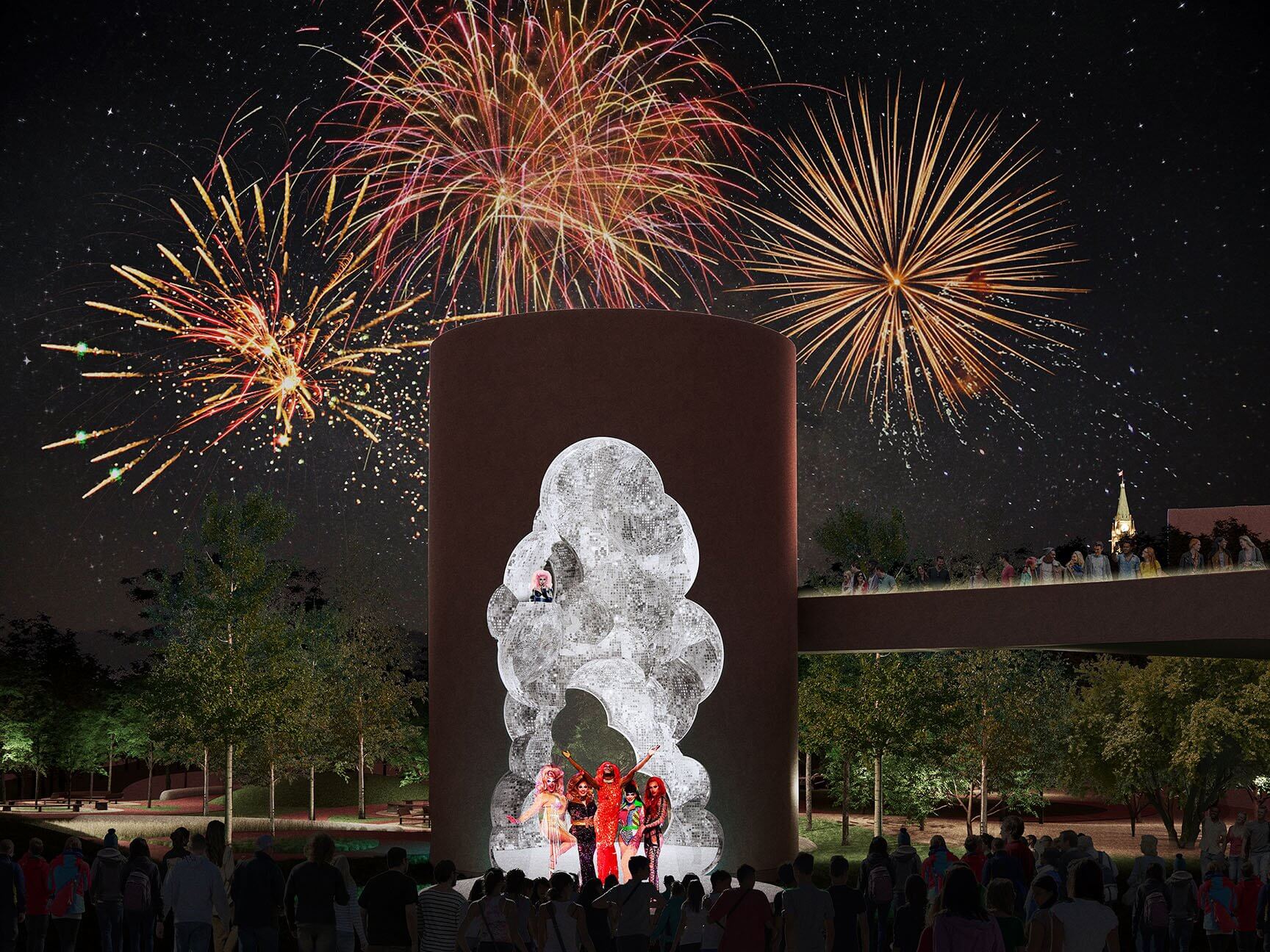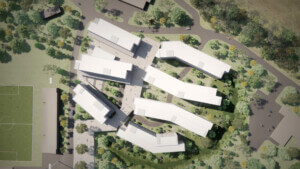Thunderhead, a design concept envisioned for a planned LGBTQ2+ National Monument in the Canadian capital of Ottawa, has been selected from a group of five shortlisted proposals first revealed last November.
Anchored by a mirror tile-clad sculptural imprint of a thunderhead cloud set within a soaring circular column, the winning design includes an intimate gathering space within the monument itself as well as a large outdoor stage for performances and protests extending from the base of the column. The proposal comes from Team Wreford, an all-Canadian and mostly queer cadre comprised of Winnipeg-based transdisciplinary design studio Public City, along with visual artists Shawna Dempsey and Lorri Millan, and Albert McLeod in the role of Indigenous and Two-Spirit People subject matter expert and advisor. Thunderhead was selected over finalist designs submitted by a slew of Canadian architecture, landscape architecture, and design practices along with a few big-name international firms including SOM and MVRDV. A design from MASS Design Group was also in the running.
“We are thrilled by the powerful, captivating and extraordinary design proposed by Team Wreford,” said Michelle Douglas, a Canadian rights activist who serves as executive director of the nonprofit LGBT Purge Fund, in a press announcement from Canadian Heritage. “Their design concept not only embraces the vision for this monument, but it is a stunning and important landmark for the LGBTQ2+ community. It will stand as both a beacon of inspiration and a reminder of the pain of discrimination. We are already dreaming of the day when the monument will be open for all to visit and experience.”

Thunderhead will be realized at a prominent downtown Ottawa site within a large, grassy expanse of public parkland near the northeast intersection of Wellington Street and Portage Bridge near the Ottawa River. As previously reported by AN and reconfirmed by Douglas during the press conference , the roughly $6.4 million ($8 million Canadian) monument will be wholly financed by the LGBT Purge Fund, which was established following a historic 2018 class-action settlement reached between the Canadian government and survivors of the LGBT Purge.
Carried out from the 1950s through the mid-1990s, the LGBT Purge was the systematic persecution of lesbian, gay, and transgender members of the Canadian Armed Forces, the Royal Canadian Mounted Police, and the Canadian federal public service. This decades-long campaign of harassment, intimidation, and termination was carried out at the highest levels of the Canadian government and impacted an estimated 9,000 individuals over four decades. The LGBT Purge Fund was established to manage projects financed through settlement money that would have been provided to survivors of the purge as compensation if they had still been alive at the time.

The international design competition seeking proposals for the The LGBTQ2+ National Monument, a first of its kind of Canada, first launched in October 2020. Construction work on Thunderhead is slated to kick off next year with an anticipated completion date of 2025.
This morning’s press conference was attended by Douglas, Martine Roy, an LGBT Purge survivor and chair of the LGBT Purge Fund’s board of directors, and representatives from Canadian Heritage among other agencies. Also present were members of Team Wreford, who further explained their monument design, which in addition to the titular cumulus-inspired sculpture, includes a large open lawn, orchard, medicinal garden, fire pit, and a healing circle ringed by stones hand-selected by Two-Spirt Elders.
“We are so proud of this moment, and not just for our team but for our family, our children, and for all of their friends who are going to grow up in a world that, because of today, promises to provide acceptance, love, and understanding,” said a visibly emotional Liz Wreford, co-founder and principal landscape architect of Public City, who was joined on video this morning by co-founder and principal architect Peter Sampson.
“This is about building the kind of world we want to live in and a country we believe in. This is an amazing moment for Canada and we are honored to be given this responsibility—it is not one we take lightly.”
“It was a challenge to design a monument that’s relevant to all LGBTQ2+ people. We have different identities and histories,” continued Dempsey. “However, there is a unifying characteristic: persistent endurance in the struggle for basic human rights and strength to pursue life, sex, and love; to build families and communities despite societal hostility.”
As for the monument’s namesake natural phenomenon, McLeod explain: “This idea of a powerful thunderhead cloud that can contain divine sparks of desire, anger, and inspiration and begin to set things right—this is what inspired our design.”
In addition to Douglas and Roy, the National LGBTQ+ Monument design competition jury included, among others, architecture critic and educator Aaron Betsky, landscape architect Grant Fahlgren, and art historian and curator Bernard Lamarche. The five shortlisted design proposals were also open to a public review session held last November, in which interested parties could provide their reactions to each submission via an online survey.

The results of the survey were taken into consideration by the jury along with input from the Monument Advisory Committee and Indigenous Circle, the National Capital Commission’s Advisory Committee on Planning, Design and Realty, and experts in fields relating to conservation, engineering, and more.
A deeper dive into the design of Thunderhead can be found here.











